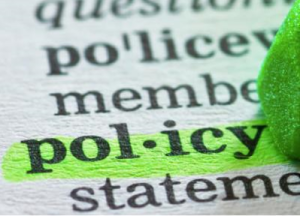Components of a heat stress policy
- By Ross Di Corleto
- 23/08/2014
- No Comments
So you have been given the task of developing your company’s heat stress policy. What should it contain, what should you target, how long should it be? Here are a few key aspects you need to cover, in no particular order.
- Training – for me the most important. An individual who knows what early symptoms to look out for and what can be done to prevent a heat impact is far less likely to become a statistic. They can also play an important role in looking after one another as peer support.
- Water Replacement – how many volumes of literature have been written on this subject? People need to understand that when it comes to heat stress management water replacement is not optional, it is a must do.
- Self-Determination (self-pacing) – Each individual is unique and from day to day their physiology changes depending on their environment and circumstances. Workers need to know how to pace themselves according to the conditions and be allowed to rest when they need to.
- Work Scheduling – how many work planners think about the climate and work conditions when scheduling outages and maintenance. Too often we see hard physical work planned in the height of summer at the hottest part of the day. It needs to become a key aspect of the planning process particularly in some of our hotter climates.
- Clothing – Clothing needs to consider air flow (i.e. vents and use of mesh materials) colour and insulating properties. The military undertook extensive research during the Second World War looking at these parameters. They can play a significant role in not just heat stress but also thermal comfort.
- Controls – Identify some basic controls. Air flow, use of portable shade, insulating shields for radiant heat and mechanical aids to reduce the metabolic load.
- Acclimatisation – Acclimatisation should be considered when planning work that may involve employees recently back from extended recreation leave in cooler climates
- Assessment – this doesn’t mean taking one reading with an instrument and recording it somewhere. Assessment needs to be looked at utilising the three step protocol. Using the right tool for the right assessment and coming up with practical controls that can address the scenario and environment and not just work/rest regimes.
- Medical Screening and surveillance – Don’t put susceptible employees with medical conditions at risk. If the work environment will expose individuals to extreme climates ensure that they are physically capable and don’t have any underlying conditions. It also helps to keep an eye on people to ensure all is OK. Sometimes programs such as urine specific gravity monitoring can be a useful tool.
Company Policies and procedures come in all shapes and forms but if you cover most of these points you should be heading down the right track. Just click on the link below and it will take you to a simple heat stress policy to give you an idea of how it can come together.
Bottom Line
Heat as a hazard can have a major impact on a business from a health and a production perspective, don’t ignore it. A simple straight forward policy can help start you off in the right direction.
References
Douglas, H.K.L., and Lemons, H., Clothing for Global Man. Geographical Review, Vol. 39, No. 2 (Apr., 1949), pp. 181-213.

 Copyright © 2024
Copyright © 2024
Leave a Reply